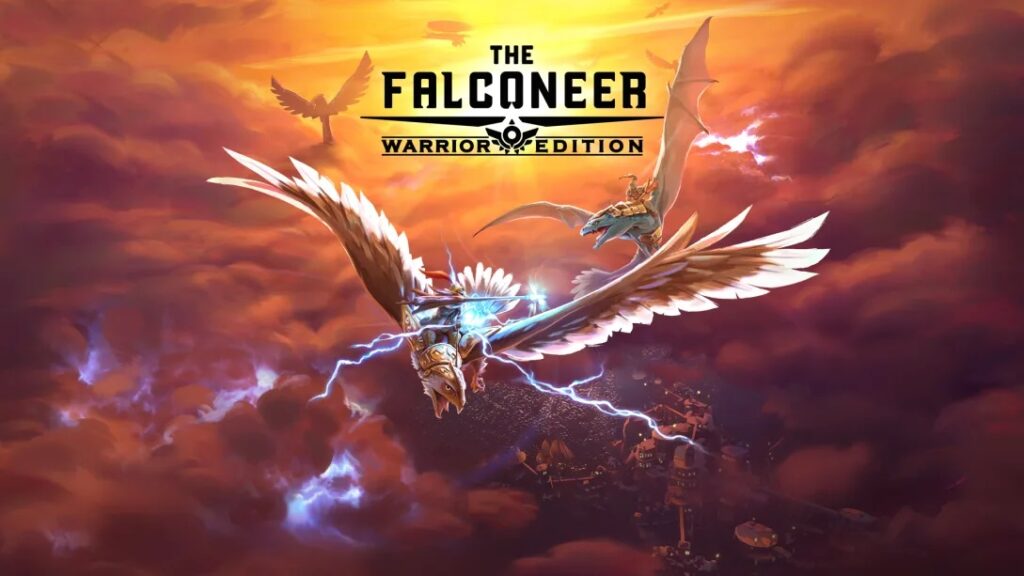
REVIEW NOTE: This review has been revised with updates on the controls after consultation with the developer. The initial version of this review missed key gameplay elements which noticeably improved the combat experience with The Falconeer.
It’s becoming more and more frequent that we see small single-creator indie games popping up with astonishing degrees of complexity and fantastic design. Thomas Happ blew everyone away with the release of Axiom Verge and everyone knows the story of Minecraft. Other games by one-man development studios include such hits as Iconoclasts, Stardew Valley, and even Tetris. Today we’re looking at yet another impressive release built from the ground up by a one-man team, The Falconeer: Warrior Edition from Tomas Sala and publisher Wired Productions.

The Falconeer was originally released on Xbox One as an exclusive title but is now finally coming to all platforms. The Warrior Edition also includes the latest updates, a new player class, and a variety of DLC not included with the original Xbox version. As you might expect, this is a game about flying around on giant birds. It’s a fully realized world that allows you to explore to your heart’s content, fight a variety of unique and creative enemies, and learn about the world of Ursee. Moving from chapter to chapter and base to base, the history and backstory slowly spools out as you protect boats and mutate your gigantic warbirds.
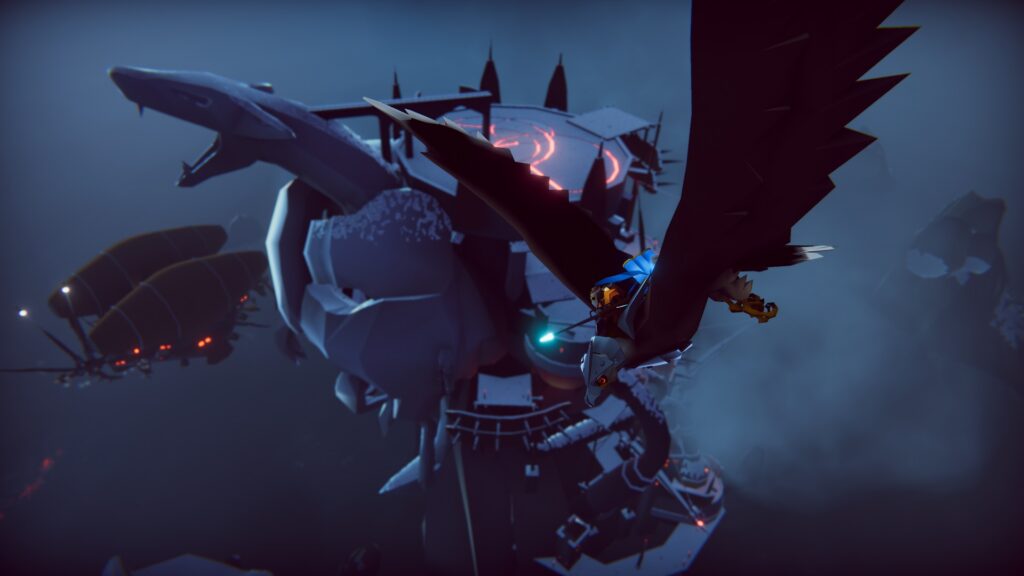
This is a detailed exercise in world-building. Each new encounter reveals more, and the world expands bit by bit as you fly between sets of islands or down into surrealistic ocean chasms. The design work in The Falconeer is absolutely astonishing and the care with which character models, backgrounds, oceans, and even the HUD are simply outstanding. However, this is not a perfectly polished gem of a game like some of the other titles mentioned above. Instead, there are some issues with The Falconeer that detract a bit from the experience of flying a giant warbird into mortal combat over the endless oceans of Ursee.

First among these is the combat in The Falconeer. This is an aerial combat game and as anyone who has played any dogfighting game knows, these games live and die by their targeting systems. The Falconeer’s system is a rather non-intuitive. Initially on playing the game, it felt woefully inadequate for the gameplay. After talking with Tomas Sala for a bit about the design, it turns out that the issue is a bit more complex though. First, there’s the fact that on the Switch, to hold a lock-on, you have to hold the B button down after highlighting an enemy with Y. Then there’s the open-world nature of the game, which is so open that you can legitimately entirely miss the opening missions which teach you how to perform basic combat moves effectively. Finally, there’s a setting in the menu system called Camera Smoothness that is set to near maximum by default. Turning camera smoothness down to a minimum and using the lock-on allows you to track enemies much more easily and the reticle is fairly forgiving, making progress significantly easier. You’re sacrificing the outstanding visuals a bit and making the game less cinematic overall, but you’re improving the gameplay, so it’s probably worth if if you are having problems. If you use a few mutagens on your birds and upgrade your main gun, you’re suddenly breezing through missions instead of struggling. But you can easily miss basically all of this information by just setting off on an exploration immediately. On top of that, the targeting reticle still doesn’t move particularly fast and even if your camera is tracking an enemy, your warbird doesn’t auto-rotate with the camera, forcing you to make painstaking turns with the reticle while you strain for a lock and hit. It’s a system that works, but it could be faster, and the fast, frenetic action that you would expect from a game like this has a little less punch because of it. Mastering the controls and nuances of the game does definitely clean things up a bit and make combat a lot more fun, but there’s some patience required for the learning curve. It’ll pay off, don’t worry.

For an open-world title that is specifically sold as a combat game, combat is probably a bit slower and weaker than it should be. The game takes a bit longer to get things moving that it should and the controls take a fair bit of practice to get the knack for. On top of the combat, there are other issues however and one of these is the pacing itself. The Falconeer is unfortunately rather boring. Sure, there’s a complex story with nuanced politics and incredible design, but it’s presented in such a way that it’s astonishingly tedious to listen to, especially considering everything is fully voiced and there are copious narrated mission cut-scenes. The background and history is so heavy that it feels like a Tolkein excerpt and doesn’t really give you a strong basis in what’s going on. By the time you get far enough through the chapters, assuming you have taken the time to really master combat, chances are pretty high that you won’t much care about the extensive detail that The Falconeer revolves around, and that’s a shame because it’s quite interesting.

Then there’s the flying. Flying around on a giant bird is fun and can be absolutely entertaining. A couple of years ago, we reviewed a small indie game called Aer (reviewed here) where the main character can shift to an eagle and back, flying around the world and finding out what’s going on. It was utterly captivating and flying was a pure joy, soaring around and through various challenges and entirely intuitive. That’s simply not the case with The Falconeer though. While it’s nice to fly around and you can head up into the clouds or skim the water, the flight feels a bit unresponsive and your bird simply isn’t very fast. You can get better ones eventually…it just takes a long time like everything in the game. And floating in basically a straight line over ocean with nothing to do while you slowly search for the next home base or explore to find new islands just isn’t fun. It’s tedious, there’s nothing holding your attention, and it feels like an ocean view simulator. When you’re on a mission, you can at least conveniently skip ahead to the mission area but in free flying, there’s none of that and really nothing to do other than look around a fair amount of the time.
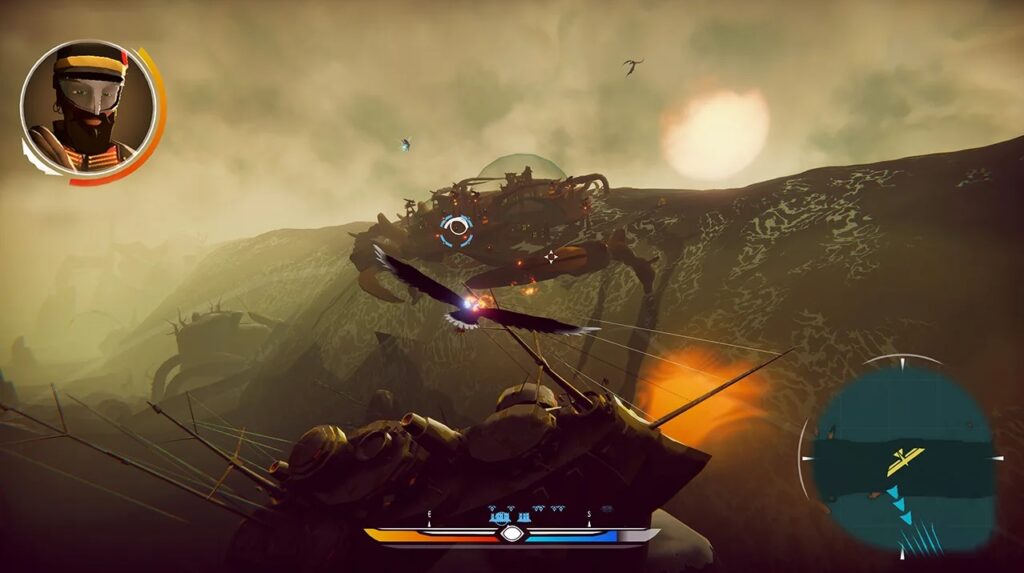
Eventually, while there’s a lot of action available to you with sky pirates and a variety of other menaces, The Falconeer just crawls along. While you can slowly master the nuances of the game, realistically that shouldn’t be necessary and it comes down to a matter of control design. This is a game that should play like a mix of Panzer Dragoon and Ace Combat and it doesn’t hit near either, especially with regard to camera decisions. Add in the fetch quests, escort quests, and other very standard, very generic activities as filler and you end up with an epic vision that simply doesn’t quite manage to live up to its design potential.
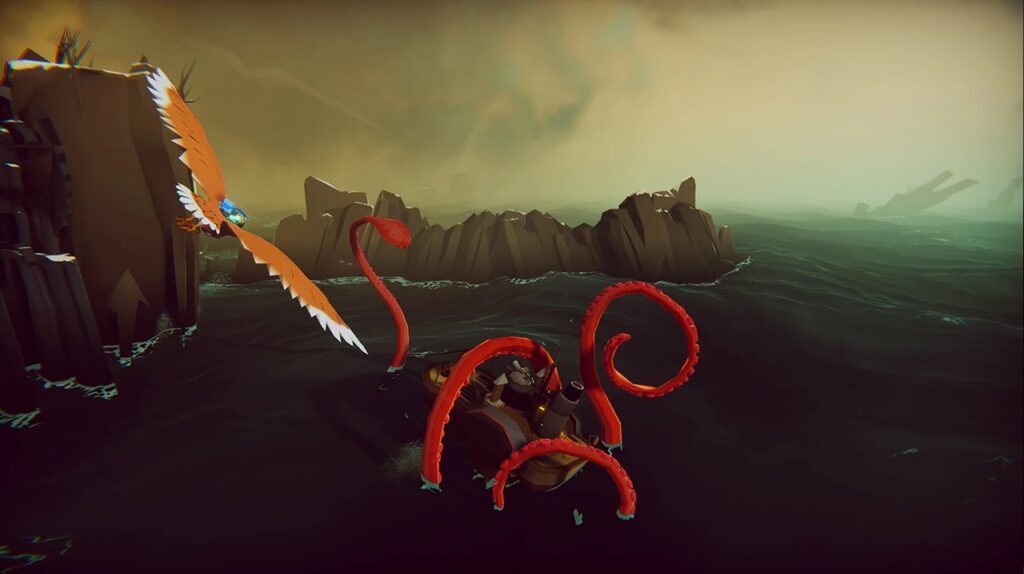
There’s really only one area that The Falconeer truly excels at and that’s the visuals. This is an absolutely gorgeous game, even on the Switch. Flying through the clouds into a sunset or diving through a storm while rain and lightning pound at you are simply stunning. Close up shots of the structures on the various islands are outstanding and simply drenched in detail. This is one amazing looking game, and it’s honestly hard to believe it was made by one person. But looks alone don’t sell, and even with the excellent voiceovers, complex plot and backstory, and very impressive soundtrack, the negatives outweigh the positives here.
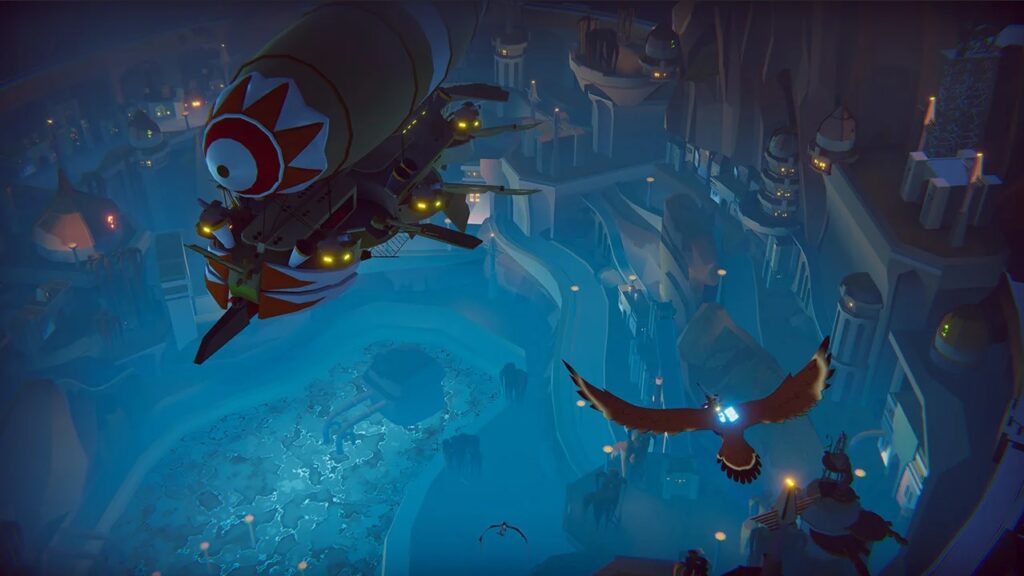
The Falconeer is an impressive accomplishment. It shows how far the game industry has come in recognizing talent and allowing for independent publication. But it’s not a good game because it’s just not a fun game. There are simply so many titles out these days that are more fun to play that it’s hard to recommend a game like The Falconeer which requires players to patiently learn the ins and outs of a complex world with complex combat while being handed information bit by poorly paced bit until they manage to make the experience palatable. Some gamers will absolutely love the game, but for other players, this is an experience to skip, and that’s honestly unfortunate. It’s a beautiful game that should be a smash hit, but when your wings are weighed down by gameplay and pacing issues, it’s just a bit hard to fly.

This review was based on a copy of The Falconeer: Warrior Edition provided by the publisher. It was played on a Nintendo Switch in both docked and undocked modes and played equally on both. The Falconeer: Warrior Edition is also available on PS4 and PS5, and the original version of the game is available for Xbox One, Xbox Series X, and PC on Steam.

